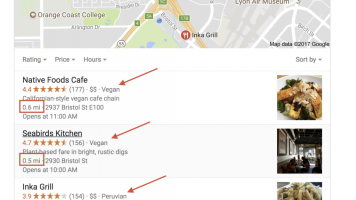Ultimate Guide to Real Estate SEO: 7 Ways to Earn Traffic & Leads ? #DigitalMarketing
When house hunting, 90 percent of buyers use the internet. In fact, 53 percent of buyers start their search online, according to “The Digital House Hunt,” an extensive report on real estate consumer trends conducted by Google and the National Association of Realtors.
More than ever, people head online when it comes to looking for homes and finding Realtors®. According to the 2016 Profile of Home Buyers and Sellers, 86 percent of home buyers consider real estate websites the most useful source of information when buying a home. The very first step that 44 percent of home buyers make when house hunting is to look online.
Between 2008 and 2012, real estate-related searches increased by 253 percent. With so much opportunity online, realtors can’t afford to miss out on this valuable traffic; for professionals in real estate, SEO is more important than ever.
When it comes to capturing traffic for terms related to real estate, SEO efforts begin with local keyword targets on a personal website.
Read on to discover how you can leverage a real estate website to capture traffic (and leads). Here’s how to optimize your real estate website:
- Target local keywords.
- Write blog entries.
- Take advantage of photos and videos.
- Make your Site Mobile with responsive design.
- Get listed in Directories.
- Optimize your bio on your broker’s website.
- Incorporate social media.
1. Target Local Keyword Phrases
Sixty-nine percent of home shoppers begin their research with a local keyword phrase, like “Glendale realtor.”
Most realtors service multiple cities and regions. However, when you start your website, focus on the main city you do business in first. From there, build out silos that target other areas.
Optimize your website for search terms such as:
- [City] real estate
- [City] homes for sale
- [City] real estate listings
- [City] realtor
- [City] real estate agent
These words can appear on pages throughout your site. For example, a site focusing on just Glendale realty might be organized like this:
- Glendale Homes for Sale
- Living in Glendale
- Glendale Real Estate Testimonials
- About Your Glendale Realtor
Throughout these pages, incorporate the local keyword targets, working them into content that is useful to a prospective home buyer.
Clay explained that you should make your website a resource. On a page like “Living in Glendale,” provide information on school districts, crime rates, median income, public transportation, and statistics on the average homeowner.
The more targeted a real estate website can be, the better.
Really focus on capturing local traffic. You have a much better chance to rank for, let’s say, “Glendale realtor” than “Southern California realtor” — as you build your site and traffic, you can eventually target more competitive terms like “Southern California realtor,” but not right out of the gate. You’ll have more success if you take a more targeted approach.
A Note on Using IDX/MLS
It’s common practice for realtors and brokers to use IDX (Internet Data Exchange) to render real estate listings. While this is great for users, it usually does little to influence rankings on search engines because these MLS listings are usually rendered with jQuery, in an iFrame or on a subdomain that appears off of the main site — meaning Google won’t index the content as part of the site. That’s why it’s important to add additional unique content to the listings page, such as:
- extra facts and features of a property
- excerpts from your testimonials page
- videos
- photos
2. Write Blog Post on Homes You’re Especially Keen to Sell
A real estate agent can represent hundreds of listings at a time, there are no doubt a few key properties that the realtor is particularly motivated to sell. One way to secure traffic to your site for those specific properties is to write blog posts. Each blog post should target a specific property’s address, which perspective home buyers will be searching for using Google. The address becomes the keyword — follow all SEO best practices such as using the keyword in:
- Meta description
- Title tag
- Alt tag on photos
- File name on photos
- The content
As for the content itself, come up with 200 words of unique content describing the home’s features in addition to the standard description — and in this case, you don’t have to worry about duplicate content.
Google expects to see those descriptions of homes appear across the web. You won’t be penalized for including standard listing information. However, if you want to rank for the address as a keyword, you’ll have to include unique content, as well.
3. Take Advantage of Photos and Videos
Photos and videos are key engagement objects on all websites, but this is especially true of a real estate site. Home buyers love seeing a video tour of the inside of their prospective new homes. In addition to video tours, consider capturing testimonials on video, too.
Whenever you sell a home, get a testimonial. If you have a video camera, a steady hand and good lighting, try to get that testimonial recorded on the spot. A home buyer is ecstatic right after getting their keys. That’s a great time to ask for a review.




